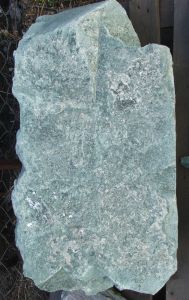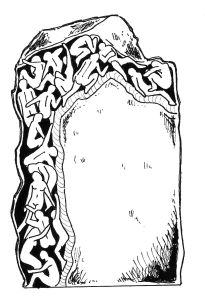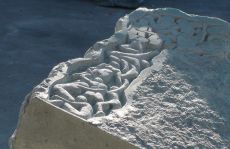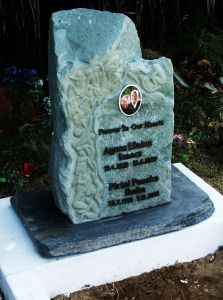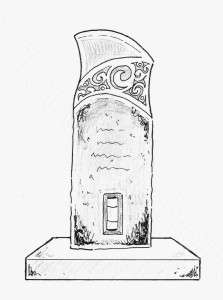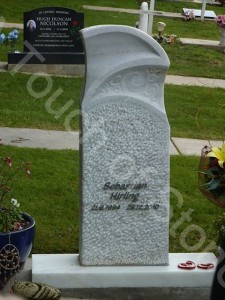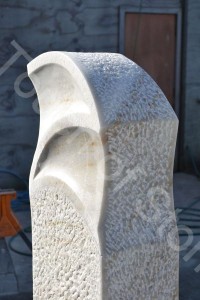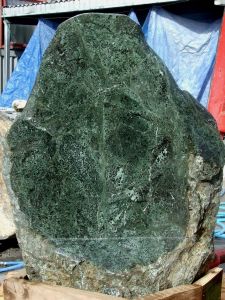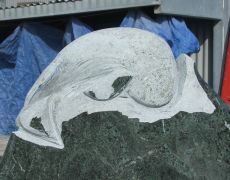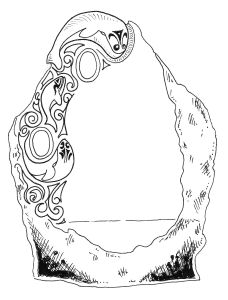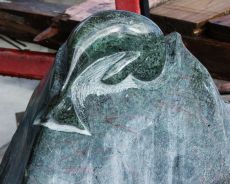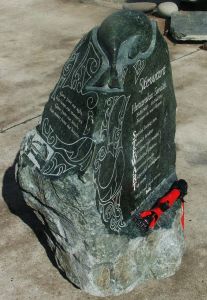Headstones & Plaques – A Look into the Process
When we are working on customised memorials our most important goal is to create something you are happy with. We need to utilise our abilities as experts using our experience and intuition to carry out the work. In this case you give us artistic freedom to get to a finished piece of art. Artistic freedom guarantees an uninterrupted flow of inspiration while the process happens and enables us to create the most stunning results.
The following examples show the thoughts we put into the finished headstones.
.
| “This is one of my favourite stories about the stone that was featured in our documentary. The headstone was made for the parents of a family in Tauramunui. The daughters and sons of the deceased found that it would be difficult to put something on the headstone that their parents had in common. After an intensive discussion with the family I gradually found out how many brothers and sisters there where involved. It was an astonishing number of 18 children. I remember how I tapped my index on a piece of paper saying enthusiastically: ‘This is exactly what your parents’ headstone should show'” – Stephan |
|||
|
| “This headstone followed a very intuitive idea that came up after a short discussion with the family. The person for whom the headstone was for was known as a good observer and we therefore wanted to put the emphasis on something that showed eyes. The outcome was a tall and lean stone that somehow reminds of the Sydney opera showing both eyes in two abstract arches on the top.” – Susanne |
| “This headstone was for a member of the Ngāi Tahu Matawhāiti tribe. The deceased grew up close to the sea so the goal was to depict seven whales on its surface. Their number represent the whales in a story that is told there and the colour of the stone represents the colour of the sea. When the big piece of amphibolite arrived at the workshop it almost asked for giving it a twist by entangling it with patterns so we started to carve one of the whales on top and put the other ones sandblasted around the surface.” – Sam |
|||
|
The following parts of our documentary show how we get our work done.
.
.
.
.

